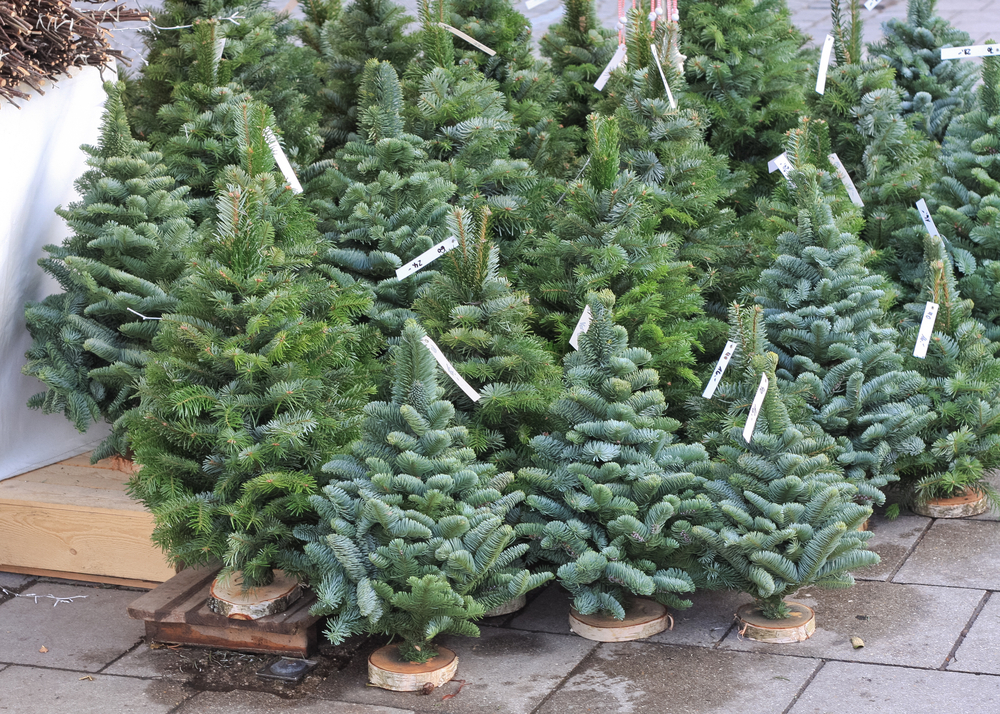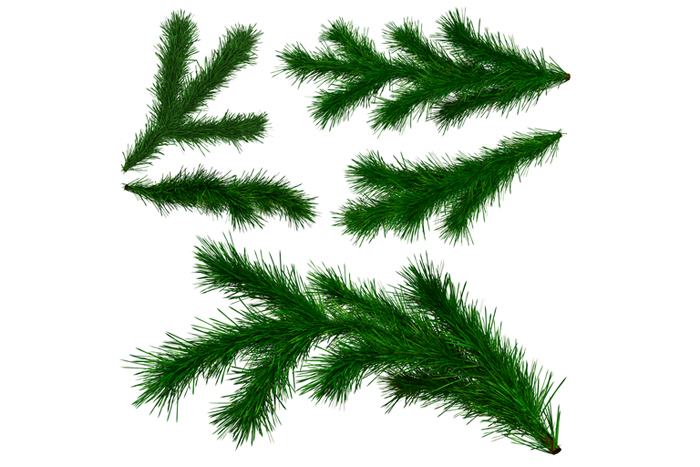Christmas Trees: Real vs. Fake, and How to Keep Them Fresh

"O Christmas tree, O Christmas tree, how lovely are thy branches," goes the traditional German carol. But are those branches real or fake? Conscious consumers may wonder which type of Christmas tree — real or artificial — is better for the environment. And if the branches are real, how do you keep them fresh for the entire holiday season?
The real vs. fake argument will likely not be settled any time soon. Americans apparently prefer to go natural. They purchased 27.4 million real trees in 2016, and 18.6 million fake trees, according to a Nielsen consumer survey commissioned by the National Christmas Tree Association (NCTA), a trade association of tree growers.
There are valid arguments for both choices. On the one hand, the NCTA argues that real trees are "renewable, recyclable resources." On the other hand, artificial trees can be used over and over, says a member of the American Christmas Tree Association, an organization that represent both real and artificial tree retailers.
Environmental impact
"Drive time," disposal methods and life span are determining factors in assessing a tree's environmental impact, according to two studies. In 2009, researchers at Ellipsos, a sustainability consulting firm, assessed the impact of real and artificial trees in four categories: human health, ecosystem quality, climate change and resource depletion. They found that a natural tree is a better option for the environmentally conscious consumer in terms of effects on climate change and resource depletion. However, an artificial tree becomes a better solution regarding climate change — if it's used for 20 years.
A similar study, by PE International and sponsored by ACTA, also a sustainability consultant, found that using an artificial tree for more than eight Christmases is environmentally friendlier than purchasing eight or more real cut trees over eight years.
Health concerns
Promoters of artificial trees often argue that real trees can trigger allergies, either from pollen or mold and dust. However, Clint Springer, an assistant professor of biology at Saint Joseph's University in Philadephia, noted in a press release that pollen is not usually an issue in farm-raised trees because they are too young at cutting time to be reproductive.
Springer also said that mold spores found in live trees are usually not a problem because they rarely become airborne. If a person is sensitive to the natural scent, however, Springer recommended pines over firs because pines tend to have a weaker scent.
Get the world’s most fascinating discoveries delivered straight to your inbox.
Keeping it fresh
If you choose a real tree, keeping it fresh is very important, not only to preserve its beauty, but also to prevent it from becoming a fire hazard. With proper care, a Christmas tree can stay fresh for a month or even longer.
Everyone knows that you must add water to the reservoir in the base of a Christmas tree — and as a rule of thumb, a typical tree absorbs a quart of water for each inch of its diameter.
Add to the mix?
There is some debate about whether adding any kind of mixture to the water helps keep a tree fresher longer. Tchukki Anderson, a staff arborist for the Tree Care Industry Association, says many people have had success by mixing a tablespoon of sugar or corn syrup in the water. However, she says, water is usually enough.
A 2010 study at the University of Wisconsin-Stevens Point confirmed that keeping fresh-cut trees watered will reduce needle loss, refuting claims that watering a dead tree is pointless. However, the study's author, tree scientist Les Werner, says additives such as sugar, aspirin or even vodka don't help. "Clean water still works the best."
But don't take their word for it. Try the experiment and find out for yourself how to keep your Christmas tree fresher longer. If your family uses a real Christmas tree, or fresh evergreens for decoration, borrow a few small cut branches and try this experiment. You could also try using cut flowers, such as carnations.
What you need
- 5 small branches of healthy, fresh cut evergreen, each about 4 inches long — make sure the branches come from the same tree and are as nearly identical in size and shape as possible. (If you use flowers they should be the same type, and the stems should be cut to the same length in the same way.)
- 5 quart jars with lids to store your solutions
- 5 "vases" for your cuttings (It is best to use identical containers. Transparent plastic cups or drinking glasses work well — you will want to be able to observe the cut tip of each sample without removing it from the liquid.)
- Tap water
- White vinegar
- Light corn syrup
- Household bleach
- Labels and permanent marker
- Measuring cup
- Measuring spoons
- Mixing bowl
What to do
Prepare the solutions – be sure to label your jars:
- Jar 1: 1 quart plain tap water
- Jar 2: 1 quart of water with a half-cup of light corn syrup dissolved in it. (It works best to warm the water on the stove and add the syrup slowly as it warms. Make sure it is cool before placing your plant cutting in the solution.)
- Jar 3: 1 quart of water with 1 teaspoon of white vinegar added
- Jar 4: 1 quart of water with 1 teaspoon of bleach added
- Jar 5: Tree Freshening mixture: 1 quart of water with a half-cup of light corn syrup dissolved in it, 1 teaspoon of white vinegar* and 1 teaspoon bleach.
NOTE: It is VERY IMPORTANT to mix the syrup water and vinegar together first before adding any bleach!!
*Adding bleach directly to undiluted vinegar results in toxic vapors. Omit the vinegar if this makes you nervous.
Prepare the test samples – make sure to label them!
- Trim the bottom of each branch at an angle and place each of your branches in a separate "vase" so that the trimmed end rests on the bottom and the foliage is clear of the vase.
- Pour just enough liquid from Jar 1 into Vase 1 so that the trimmed angle of the branch is completely submerged in the liquid but most of the branch is above the surface of the liquid.
- Repeat with Jar 2 and Vase 2 and so on, with each of the other solutions.
- Place the vases in a secure location at room temperature.
- Observe the branches every two days over a period of at least 4 weeks, adding appropriate liquid from the jars to keep just the cut tip of the branches submerged. Look for changes to the foliage and for signs of mold or mildew at the base. Record your observations in a data table.
Questions
- Most tap water has a slightly alkaline pH. Most evergreens prefer slightly acidic conditions. Which additive makes the water more acidic?
- Light corn syrup is made up of dissolved sugars, why is adding sugar into the mix important?
- Undiluted bleach is toxic to living things, so why was bleach added to the Tree Freshening mixture? (Hint: Think about why many household cleaners include bleach.)
What else to try
- Try using clear soda pop (like 7Up) instead of the Tree Freshening mixture in Jar 5.
- Try grinding up 1 aspirin tablet to dissolve in a quart of water instead of the white vinegar.
- Try other household liquids.
Experiments compiled by Mary Bagley, Live Science contributor
More Holiday Science Experiments
More Science Fair Projects




